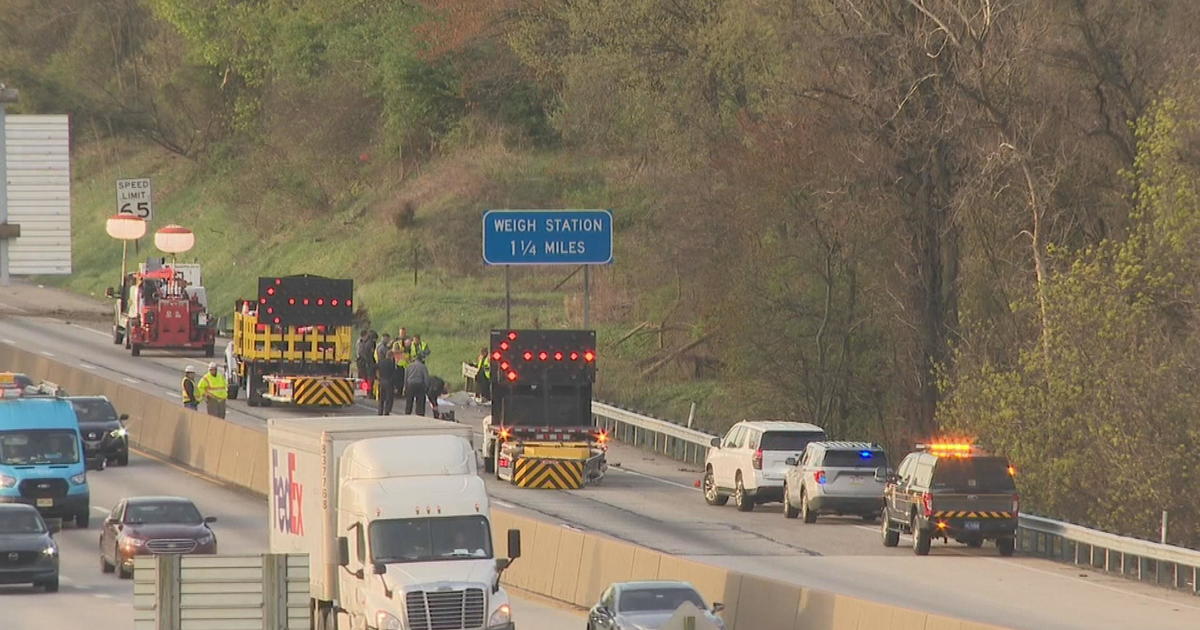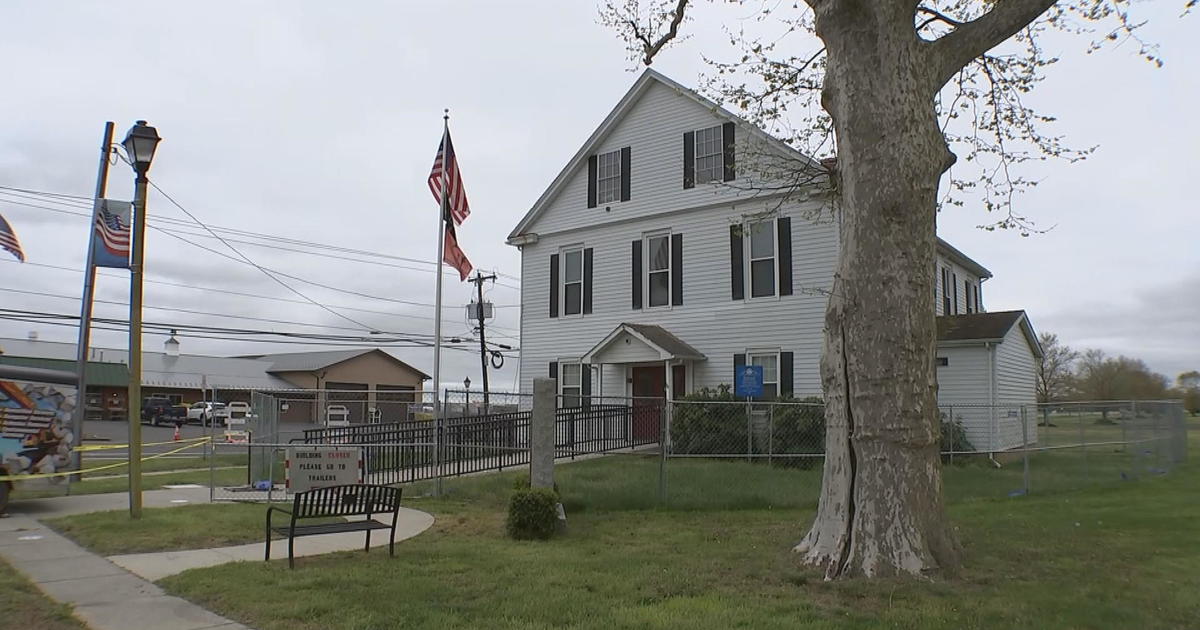Plane With Unresponsive Pilot Crashes Off Jamaica
KINGSTON, Jamaica (AP) — Shadowed by two U.S. fighter jets, a small plane with its windows frosted and its pilot slumped over flew a ghostly 1,700-mile journey down the Atlantic Coast and beyond Friday before finally crashing in the waters off Jamaica. The fate of the two or more people aboard was not immediately known.
The plane carrying a prominent real estate developer from Rochester, New York and his wife went down about 14 miles (22 kilometers) northeast of the coastal town of Port Antonio and Jamaica's military dispatched two aircraft and a dive team, said Maj. Basil Jarrett of the Jamaican Defense Force.
"An oil slick indicating where the aircraft may have gone down has been spotted in the area where we suspect the crash took place," Jarrett said at an early evening news conference in the capital of Kingston.
No wreckage has been located, but Jarrett said search-and-rescue teams were scouring the waters for any survivors. As dark fell, Jamaica suspended the search until first light Saturday. A U.S. Coast Guard cutter is expected to join the search at that time, said Petty Officer Sabrina Laberdesque.
The single-engine turboprop Socata TBM700, which took off from the Greater Rochester International Airport in New York en route to Naples, Florida, was carrying Larry and Jane Glazer, the couple's son said.
Rick Glazer said that his parents were both licensed pilots. He said he couldn't confirm they were killed, adding that "we know so little."
Larry Glazer ran the development firm Buckingham Properties. He owned the high-performance plane he was flying and was president of the TBM Owners and Pilots Association.
Public officials who knew the Glazers issued condolences centered on their role helping revitalize Rochester.
"The Glazers were innovative and generous people who were committed to revitalizing downtown Rochester and making the city they loved a better place for all," said Gov. Andrew Cuomo. "I offer my deepest condolences to the Glazers' family and friends during this difficult and trying time."
The plane took off at 8:45 a.m. EDT and air traffic controllers were last able to contact the pilot at 10 a.m., the U.S. Federal Aviation Administration said in a statement. The agency said it had not confirmed the number of people aboard.
At 10:40 a.m., two F-16 fighter jets were scrambled from a National Guard base in South Carolina to investigate, according to a statement by the North American Aerospace Defense Command. Those jets handed off monitoring duties around 11:30 a.m. to two F-15 fighters from Homestead Air Reserve Base in Florida.
The U.S. jets followed the plane until it reached Cuban airspace, when they peeled off, said Preston Schlachter, a spokesman for North American Aerospace Defense Command & US Northern Command.
Cuba media said Friday night that a Coast Guard C-130 followed the private plane through Cuban airspace in coordination with Cuban authorities, a surprising degree of cooperation between the longtime foes. An announcement on state television said the U.S. asked for permission for the Coast Guard overflight.
The small plane finally came down after flying more than 1,700 miles (2,700 kilometers).
On a recording made by LiveATC, a website that monitors and posts air traffic control audio recordings, the pilot can be heard saying, "We need to descend down to about (18,000 feet). We have an indication that's not correct in the plane." A controller replied, "Stand by."
After a pause, the controller told the pilot to fly at 25,000 feet. "We need to get lower," the pilot responded. "Working on that," the controller said
Controllers then cleared the plane to descend to 20,000 feet, a command which the pilot acknowledged. A couple minutes later, a controller radioed the plane by its tail number: "900 Kilo November, if you hear this transmission, ident" — identify yourself. There was no response.
According to FlightAware, the plane never carried out the last descent to 20,000 feet.
U.S. fighter pilots observed the Socata's pilot slumped over before the turboprop's windows became frosted over, Schlachter said.
On LiveATC recordings, the fighter pilots can be heard discussing the Socata pilot's condition.
"I can see his chest rising and falling right before I left," said one of the fighter pilots.
"It was the first time we could see that he was actually breathing. It may be a deal where, depending on how fast they meet them, he may regain consciousness once the aircraft starts descending for fuel ..." the fighter pilot said.
The pilot was speculating that the Socata pilot was suffering from hypoxia, or oxygen deprivation, but Schlachter said the Air Force doesn't know for certain that was the case.
The incident is the second time in less than a week that a private pilot has become unresponsive during a flight. On Saturday, a pilot lost consciousness and his plane drifted into restricted airspace over the nation's capital. Fighter jets were also launched in that case and stayed with the small aircraft until it ran out of fuel and crashed Saturday into the Atlantic.
Cases of pilots becoming unresponsive while their planes wander the sky are unusual, with probably not much more than a handful of such incidents over the last decade, said aviation safety expert John Goglia. Sometimes the incidents are due to a pilot becoming incapacitated by a heart attack or stroke, but more often the problem is insufficient cabin pressurization that causes the pilot and any passengers to pass out, he said.
Pilots are supposed to check that the cabin pressurization is correctly set before takeoff, but there have been cases where they have forgotten to do that or the pressurization level has been improperly set, said Goglia, a former National Transportation Safety Board member. If cabin pressure drops too low, there won't be enough oxygen per cubic foot in the cabin and any people aboard will lose consciousness, he said. In such cases, it's likely that those on board will die from loss of oxygen before the plane runs out of fuel and crashes, he said.
Mechanical problems or a window or fuselage leak can also lead to rapid cabin depressurization. When that happens, the time of useful consciousness a pilot has in which to react is measured in seconds, Goglia said.
In 1999, the pilots of a Learjet carrying professional golfer Payne Stewart from Orlando, Florida, to Texas became unresponsive. The plane took a turn and wandered all the way to South Dakota before running out of fuel and crashing into a field west if Aberdeen. Stewart and five others on board were killed. An NTSB investigation blamed the accident on depressurization.
(© Copyright 2014 The Associated Press. All Rights Reserved. This material may not be published, broadcast, rewritten or redistributed.)
Must Read Today's Top Talkers:



